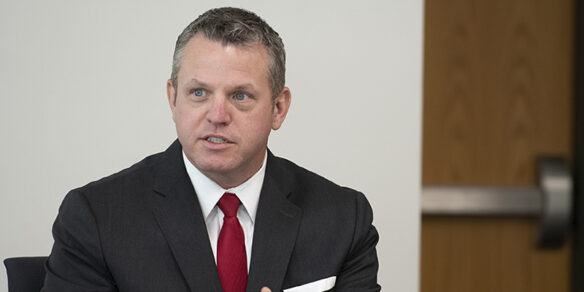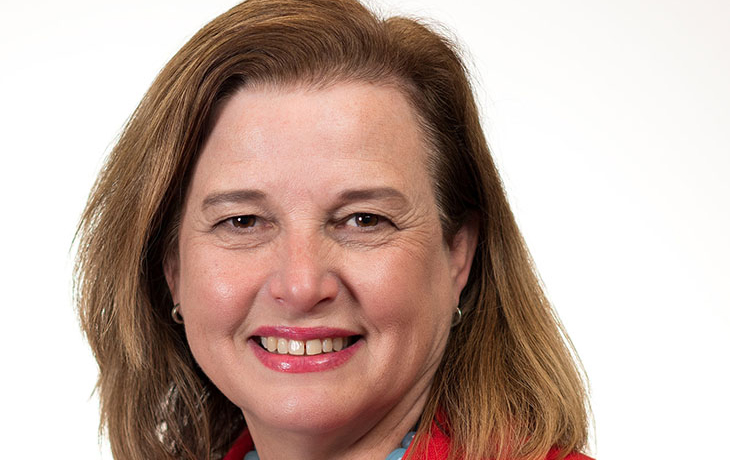
Kentucky Commissioner of Education Jason E. Glass
Editor’s note: When this column was published on May 25, 2022, it was believed that a school resource officer was in the building in Uvalde when the shooter entered. Later reporting showed this to not be the case.
Dear Kentuckians:
Like many of you, I am heartbroken and angered over the tragedy that took place in Uvalde, Texas, on May 24. As is the case in many of your communities, students and staff at Robb Elementary were celebrating the end of this school year, looking ahead to the summer and imagining what the next year of school might bring. In a flurry of senseless violence, all of this was taken away.
Some of you may know that I was the former superintendent in Colorado’s Jeffco Public Schools, which includes Columbine High School. The district also has had two other school shootings in its history. The Kentucky Department of Education’s Deputy Commissioner Thomas Woods-Tucker was the superintendent in Colorado’s Douglas County when a shooting took place at the STEM Highlands Ranch charter school in 2019.
Both of these Colorado communities are filled with incredible people, dedicated educators and amazing students. And, as I know our own Marshall County can tell you, the loss of a community’s young people and educators leave wounds that will never fully heal.
Like so many things, these tragedies in our schools are politicized. From one side, we get calls for greater gun regulation – limiting who has access to what kinds of firearms and placing limitations on the Second Amendment. From the other side, we get the ridiculous solution of handing out guns and ammunition to teachers. While we get a great deal of hot air and intense debate, neither of these solutions get traction in this era of what seems like an unbridgeable partisan divide.
I will avoid a detailed critique on these two commonly proposed solutions because they are (mostly) irrelevant, at least in the national context. A solution is only a solution if we can enact it. If no action was taken after 26 people – including twenty 6-and 7-year-olds – were murdered at Sandy Hook Elementary School almost 10 years ago, I believe it is unlikely anything (including this latest tragedy) can break the gridlock on this issue federally. I have long ago given up on any meaningful solutions to emerge from Washington. Still, at my core I am an optimist. Perhaps, this time will be different.
So we re-enter a vicious cycle with each school shooting. First comes the act of violence and television reports of a school under attack. Next comes the heartbreaking images of covered bodies and grieving parents and children.
Then comes the trite statements of “thoughts and prayers.” While I do not doubt there is some sincerity in these statements, after all these shootings they seem hollow and vacuous.
Next, attention shifts to who is to blame beyond the murderer. What signs did the killer give that they would perpetrate this horrible act? What did law enforcement or the school staff do (or not do) and what was missed?
Next, come the calls for someone in power to do something. We look to our elected officials and leaders for answers, but that process always bogs down as entrenched positions take hold. Soon the outrage fades from the news and social media and we wait for the next tragedy to strike.
And it will.
So it falls to states, communities and, most importantly, our schools themselves to take action. Kentucky is to be commended for the comprehensive School Safety and Resiliency Act (2019), which established a set of supports and actions designed to protect schools from violence.
This past legislative session, the Kentucky General Assembly took another step at improving school safety by passing House Bill 63, which requires a school resource officer (SRO) on every school campus in Kentucky, with exceptions allowed by the Office of State School Security Marshal. However, the legislature failed to actually appropriate the funds necessary to pay for these positions or put in place the supports for law enforcement to properly train these new SROs.
I believe that properly trained SROs can be a positive force in our community’s schools. I hope the legislature can correct the funding and training problems in the next session or this will fail to have the impact they intended. We also must be clear-eyed about how far this solution will take us. We now have several instances of school shootings and mass murders where the killer went past or through an SRO or armed guard, including (reportedly) this latest shooting in Uvalde.
So, we also have to work on getting ahead of the problem before we have an active shooter. Efforts at establishing comprehensive systems of mental health care for both students and adults can help. Comprehensive systems of care can be where everyone in the community and school system knows some level of mental health first aid and can support those in distress with connections to more specialized support. It also can include increasing the capacity of professional mental health providers. Our schools and communities need trained professionals and funding to create these comprehensive systems.
This morning, like many parents, I took my 10-year-old daughter to her last day of school before summer break. She already had heard about the Texas shooting on the news and it was being reported on the radio as soon as we got in the car. Of course she had questions and worries about today. I told her that school was one of the safest places she could be and that our whole community and everyone at the school was working to make sure she was safe. If I’m being honest, I think I said those words to reassure myself as much as her. I’m sure I’m not alone worrying about her and my son (9 years old), and my wife, who teaches in the school near our home.
People sometimes make statements that schools should “stick to the basics” like reading and arithmetic – as if the school could have a magic bubble around it where the troubles of a nation and community don’t also come inside. But reality bursts that bubble on a regular basis – and violently and tragically so in the case of Uvalde, Texas, and so many other places.
Our schools and the students and staff working in them are inextricably connected to and part of what is happening outside in their communities. Our schools need to be places where students can discuss the world around them and honestly talk about their fears and their dreams. Imagine what school would be like if they couldn’t talk about those things – especially on a day like today.
Our children are inheriting from us a world and a country with enormous and difficult problems, most of which we (the adults) have created. Collectively, we have a responsibility to take the necessary steps to help them succeed where we have – so far – failed.


Leave A Comment